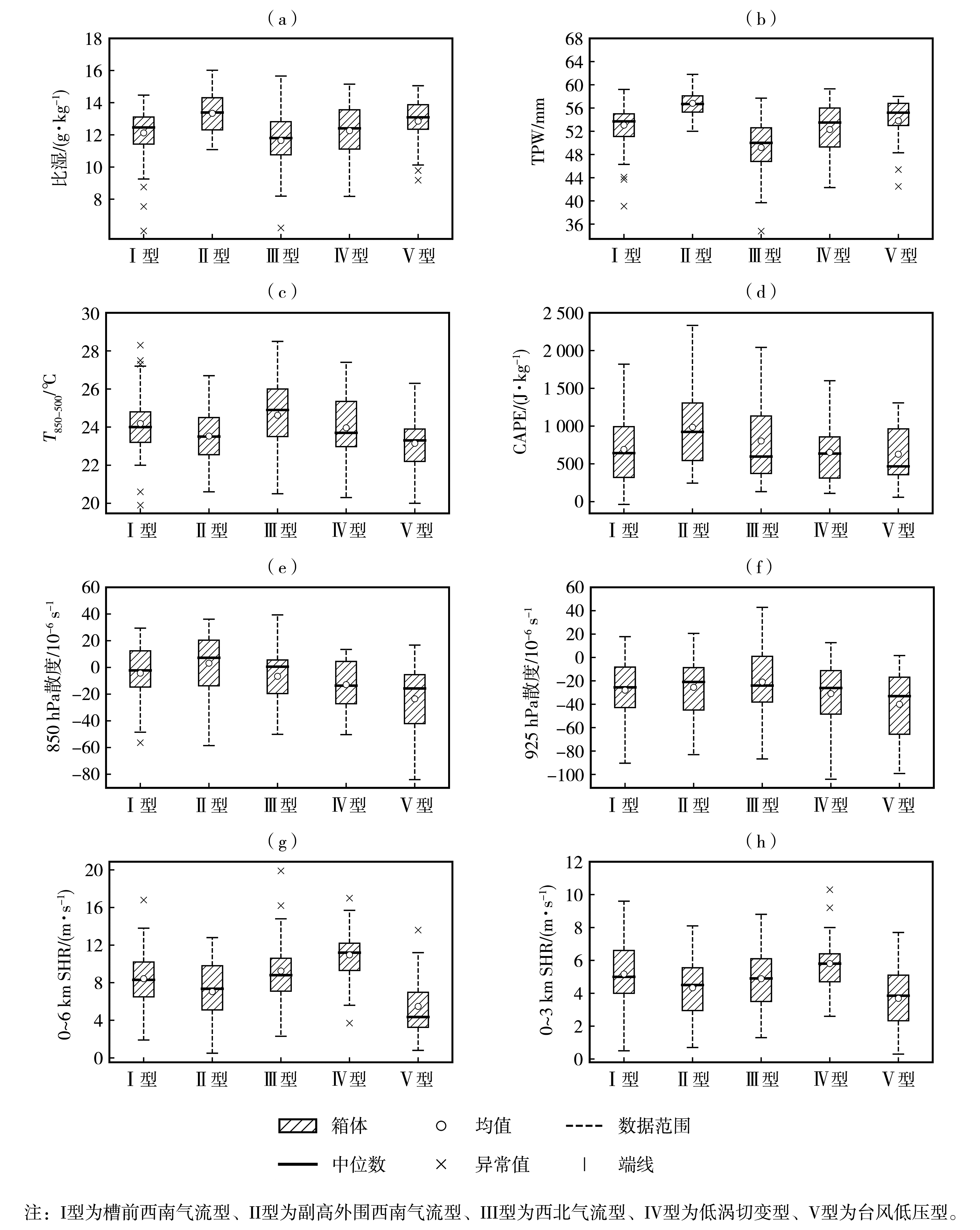| [1] |
曹艳察, 田付友, 郑永光, 等, 2018. 中国两级阶梯地势区域冰雹天气的环境物理量统计特征[J]. 高原气象, 37(1):185-196.
DOI
|
| [2] |
陈宏, 杨洋, 张楠, 等, 2024. 2010—2019年海河流域暖季极端小时降水特征分析[J]. 气象与环境科学, 47(4):23-31.
|
| [3] |
陈亮, 段建平, 马柱国, 2018. 大气环流形势客观分型及其与中国降水的联系[J]. 地球科学进展, 33(4):396-403.
DOI
|
| [4] |
高晓梅, 俞小鼎, 王令军, 等, 2018. 鲁中地区分类强对流天气环境参量特征分析[J]. 气象学报, 76(2):196-212.
|
| [5] |
黄武斌, 王研峰, 刘娜, 等, 2023. 甘肃省暖季小时降水变化特征[J]. 沙漠与绿洲气象, 17(4):95-100.
|
| [6] |
黄玥, 孙建华, 张元春, 等, 2024. 华北地区暖季雷暴大风对流系统的触发、组织类型及环境条件[J]. 中国科学:地球科学, 54(9):2 929-2 947.
|
| [7] |
孔祥伟, 李晨蕊, 杨秀梅, 等, 2024. 甘肃河东夏季区域性短时强降水环流形势分类特征[J]. 高原气象, 43(2):329-341.
DOI
|
| [8] |
齐铎, 崔晓鹏, 陈力强, 等, 2024. 基于主客观环流分型的强降水数值预报MODE检验方法及其在2019年暖季东北地区的应用[J]. 大气科学, 48(3):1 113-1 130.
|
| [9] |
邱贵强, 武永利, 董春卿, 等, 2024. 太行山中南段暖季极端降水的水汽输送特征[J]. 应用气象学报, 35(3):285-297.
|
| [10] |
苏爱芳, 吕晓娜, 崔丽曼, 等, 2021. 郑州“7·20”极端暴雨天气的基本观测分析[J]. 暴雨灾害, 40(5):445-454.
|
| [11] |
孙继松, 戴建华, 何立富, 等, 2014. 强对流天气预报的基本原理与技术方法: 中国强对流天气预报手册[M]. 北京: 气象出版社.
|
| [12] |
唐永兰, 徐桂荣, 王晓芳, 等, 2023. 1992—2021年三峡库区夏季小时强降水时空分布特征[J]. 干旱气象, 41(4):589-598.
DOI
|
| [13] |
田付友, 张小玲, 曹艳察, 等, 2022. 中国中低海拔地区三类强对流天气环境条件的基本气候特征[J]. 高原气象, 41(6):1 446-1 459.
|
| [14] |
田付友, 郑永光, 张涛, 等, 2017. 我国中东部不同级别短时强降水天气的环境物理量分布特征[J]. 暴雨灾害, 36(6):518-526.
|
| [15] |
吴梦雯, 罗亚丽, 2019. 中国极端小时降水2010—2019年研究进展[J]. 暴雨灾害, 38(5):502-514.
|
| [16] |
吴照宪, 罗亚丽, 刘希, 等, 2022. 2011—2018年安徽暖季短时强降水及其环流背景统计特征[J]. 气象, 48(8):963-978.
|
| [17] |
武威, 段中夏, 谢琼娜, 2024. 基于国家站和区域站的河南暖季极端小时强降水特征对比分析[J]. 气象与环境学报, 40(5):20-29.
|
| [18] |
肖贻青, 马永永, 陈小婷, 等, 2023. 陕南汉江盆地一次冷锋触发的短时强降水过程及预报检验[J]. 干旱气象, 41(6):972-983.
|
| [19] |
许爱华, 孙继松, 许东蓓, 等, 2014. 中国中东部强对流天气的天气形势分类和基本要素配置特征[J]. 气象, 40(4):400-411.
|
| [20] |
杨波, 孙继松, 毛旭, 等, 2016. 北京地区短时强降水过程的多尺度环流特征[J]. 气象学报, 74(6):919-934.
|
| [21] |
杨红子, 张小玲, 王佳, 等, 2024. 内蒙古中西部臭氧污染环流分型及典型个例分析[J]. 干旱气象, 42(5):767-775.
DOI
|
| [22] |
杨雅涵, 翟盘茂, 周佰铨, 2024. 基于SOM的长江流域持续性强降水过程典型环流的客观分型[J]. 气象学报, 82(5):632-644.
|
| [23] |
俞小鼎, 2013. 短时强降水临近预报的思路与方法[J]. 暴雨灾害, 32(3):202-209.
|
| [24] |
俞小鼎, 王秀明, 李万莉, 等, 2020. 雷暴与强对流临近预报[M]. 北京: 气象出版社.
|
| [25] |
张青梅, 李生辰, 苏永玲, 等, 2022. 青海高原短时强降水时空分布及天气学概念模型[J]. 高原气象, 41(2):515-525.
DOI
|
| [26] |
张武龙, 杨康权, 康岚, 等, 2024. 川西高原和攀西地区不同级别短时强降水环境参量特征对比分析[J]. 高原山地气象研究, 44(2):75-82.
|
| [27] |
张霞, 杨慧, 王新敏, 等, 2021. “21·7”河南极端强降水特征及环流异常性分析[J]. 大气科学学报, 44(5):672-687.
|
| [28] |
张一平, 吴蓁, 苏爱芳, 等, 2013. 基于流型识别和物理量要素分析河南强对流天气特征[J]. 高原气象, 32(5):1 492-1 502.
|
| [29] |
张永婧, 高帆, 于丽娟, 等, 2017. 济南市区短时强降水特征分析与天气分型[J]. 海洋气象学报, 37(3):109-116.
|
| [30] |
周璇, 孙继松, 张琳娜, 等, 2020. 华北地区持续性极端暴雨过程的分类特征[J]. 气象学报, 78(5):761-777.
|
| [31] |
DOSWELL Ⅲ C A, BROOKS H E, MADDOX R A, 1996. Flash flood forecasting: An ingredients-based methodology[J]. Weather and Forecasting, 11(4): 560-581.
DOI
URL
|
| [32] |
DU Y, CHEN G X, 2018. Heavy rainfall associated with double low-level jets over Southern China. part I: Ensemble-based analysis[J]. Monthly Weather Review, 146(11): 3 827-3 844.
DOI
URL
|
| [33] |
HUTH R, 2000. A circulation classification scheme applicable in GCM studies[J]. Theoretical and Applied Climatology, 67(1): 1-18.
DOI
URL
|
| [34] |
HUTH R, 2010. Synoptic-climatological applicability of circulation classifications from the COST733 collection: First results[J]. Physics and Chemistry of the Earth, Parts A/B/C, 35(9/10/11/12): 388-394.
DOI
URL
|
| [35] |
HUTH R, BECK C, PHILIPP A, et al, 2008. Classifications of atmospheric circulation patterns: Recent advances and applications[J]. Annals of the New York Academy of Sciences, 1146: 105-152.
DOI
PMID
|
| [36] |
LUO Y L, WU M W, REN F M, et al, 2016. Synoptic situations of extreme hourly precipitation over China[J]. Journal of Climate, 29(24): 8 703-8 719.
DOI
URL
|
| [37] |
MADDOX R A, CHAPPELL C F, HOXIT L R, 1979. Synoptic and meso-α scale aspects of flash flood Events[J]. Bulletin of the American Meteorological Society, 60(2): 115-123.
DOI
URL
|
| [38] |
PHILIPP A, BARTHOLY J, BECK C, et al, 2010. Cost733cat-A database of weather and circulation type classifications[J]. Physics and Chemistry of the Earth, Parts A/B/C, 35(9/10/11/12): 360-373.
DOI
URL
|
| [39] |
TANG Y, HUANG A, WU P, et al, 2021. Drivers of summer extreme precipitation events over East China[J]. Geophysical Research Letters, 48(11): e2021GL093670. DOI:10.1029/2021GL093670.
|
| [40] |
YIN S Q, CHEN D L, XIE Y, 2009. Diurnal variations of precipitation during the warm season over China[J]. International Journal of Climatology, 29(8): 1 154-1 170.
DOI
URL
|
| [41] |
ZHANG H, ZHAI P M, 2011. Temporal and spatial characteristics of extreme hourly precipitation over Eastern China in the warm season[J]. Advances in Atmospheric Sciences, 28(5): 1 177-1 183.
DOI
URL
|
 ), XU Lina1,3(
), XU Lina1,3( ), SHAN Tieliang1,2
), SHAN Tieliang1,2





